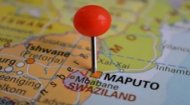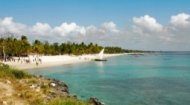|
By 1787 the Portuguese had constructed a fort at Lourenço Marques (above), named after the 16th century Portuguese tracer Lourenço Marques who first arrived in the area in 1544 and later settled with his indigenous wife and children. There then existed an uneasy and often turbulent relationship with the Ronga people who occupied the territory further inland not least because when the British arrived in the area their trade, mainly for ivory, was considered to be superior by the Ronga than the Portuguese. By the mid-nineteenth century Lourenço Marques was still undeveloped however in 1876 the Portuguese started building in earnest and it became a capital city in 1887 once the area had been gifted to Portugal at the Berlin Conference of 1885 as Portuguese East Africa. This development was spurred by the defeat of Ronga Chief Gungunyane when he was captured, taken to Lisbon, then died in exile with his successor committing suicide rather than being captured. This action effectively ended the Rongo conflict against the Portuguese. The city then grew in prominence thanks to the construction of a railway to Pretoria in neighbouring South Africa that started in 1895 and, by the start of the 20th century, Lourenço Marques was a bustling city port with a strongly cosmopolitan European look and feel (see image slideshow below). |
Maputo Profile |
Maputo Profile |
Maputo Profile | Maputo Profile |
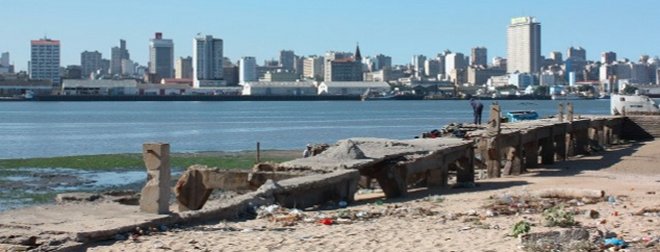
|
This period left an indelible architectural mark, best exemplified by the iconic ironwork and elegant design of the central train station, often attributed to Gustave Eiffel, and the pastel-hued façades of the Baixa (downtown) district. The city became a symbol of colonial power and a melting pot of cultures. After a protracted and brutal struggle for independence, Mozambique finally broke free in 1975, and the city was renamed Maputo in honour of the nearby river however, much of Maputo's elegance was destroyed in the subsequent years of civil war (1977–1992) and socialist rule that engulfed the country. Maputo was left shattered, teeming with refugees with all major services such as electricity and water no longer functioning. Even today bullet holes adorn many of the colonial buildings that line its once proud tree-lined avenues. The city of Maputo has slowly rebuilt, however has yet to reclaim its full former glory. Today, Maputo is a cosmopolitan hub, home to nearly 3 million people from diverse ethnic and cultural backgrounds including the Makhuwa, Tsonga, and Shona (indigenous groups), Mestiços (mixed-race Portuguese-African descent), Portuguese and Indian communities with Portuguese remaining the official language, althought local Bantu languages (such as Emakhuwa and Xichangana) are widely spoken. The city boasts several colleges and universities including Pedagogical University, Sao Tomas University, Catholic University of Mozambique, and Eduardo Mondlane University, the oldest in the country and the city's economy is centered around the port through which much of Mozambique's imports and exports are shipped, with main exports including cotton, sugar, chromite, sisal, copra, and hardwood. Maputo is the nation's financial and administrative hub, home to government institutions, banks, and a growing number of international corporations involved in the extractive industries. This has created a small, affluent professional class. However, this formal economy exists alongside a massive informal sector that is the lifeblood for the majority. Street vendors, small-scale artisans, and countless micro-entrepreneurs exemplify the hustle and ingenuity required to navigate the city's challenges. Widespread poverty, high unemployment, and significant income inequality are pressing issues. Access to basic services like consistent electricity and clean water can be unreliable, and the city's infrastructure often struggles to keep pace with rapid, unplanned urbanisation. These challenges are perhaps an inescapable part of any urban landscape, yet they are met in Maputo with a characteristic 'jetinho' — a clever resourcefulness. The daily power cuts (luzes apagadas) are mitigated by private generators while water shortages see families creatively conserving and sharing. The city's traffic, a cacophony of cars, minibus chapas, and three-wheeled tuk-tuks, is navigated with a mix of patience and audacity. For many, the primary challenge is simply making ends meet, a daily calculus of stretching meagre incomes to cover food, transport, and rent as many live in poverty and squalor in the city's numerous slums with concrete tower blocks overlooking affluent Portuguese style villas with multi-million pound houses straddling the bay. Daily life in Maputo begins with the scent of fresh bread (pão) from corner bakeries and the strong, sweet aroma of Mozambican coffee. The city centre comes alive with civil servants and office workers, while the sprawling suburban bairros buzz with activity as people head to work, school, or to set up their market stalls. The highlight of any day is the food. Maputo is a culinary paradise, famed for its incredibly fresh seafood. The signature dish, Camarões à Zambeziana (prawns in a lime, garlic, and peri-peri sauce), is a must-try, best enjoyed at a waterfront restaurant in the bustling Fish Market. As the heat of the day subsides, the marginal - the scenic avenue that runs along the bay - fills with couples and families strolling, jogging, and socialising against a breathtaking backdrop of ocean sunsets. For visitors and residents alike, the city's attractions offer a diverse range of experiences. History enthusiasts can explore the Maputo Fortress, which offers panoramic city views, or the National Art Museum, which houses a superb collection of Mozambican modern art. Also worth a look are the Museum of Natural History and the Tunduru Gardens Thee aforementioned Central Train Station is a working monument and a photographer’s dream. For a deeper cultural immersion, the FEIMA craft market is the perfect place to find handmade sculptures, textiles, and paintings while supporting local artists. No visit is complete without experiencing the vibrant nightlife when the city pulsates with energy, from laid-back bars playing Mozambican marrabenta music to trendy clubs where the sounds of Afrobeat and Kuduro fill the air until dawn. |
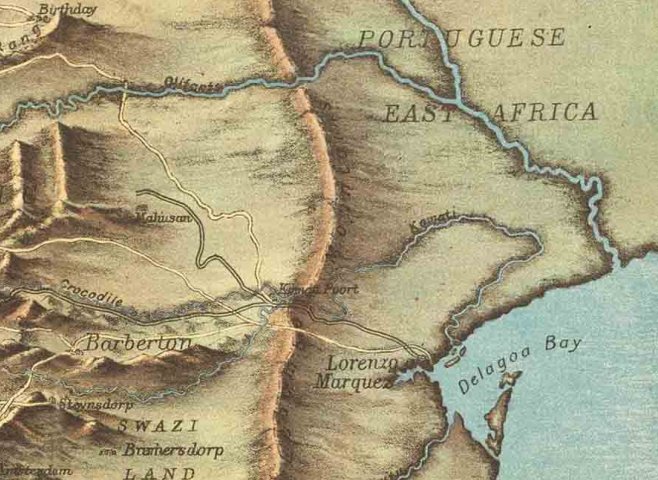
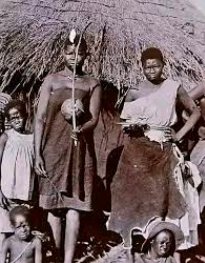 They knew the bay as Espirito Santo, a name later adopted and then discarded by Portuguese sailors. It was far from an isolated community as long before Vasco da Gama’s fleet sailed up the coast, the Ronga (right) and their neighbours were already engaged in sophisticated trade, being part of a vast network that connected the interior of Africa with the wider Indian Ocean world. Through trade routes that stretched west and north, they likely exchanged goods like ivory, animal skins, and perhaps even gold with Arab and Swahili traders who visited the coast, seeking the very commodities that would later attract European powers.
They knew the bay as Espirito Santo, a name later adopted and then discarded by Portuguese sailors. It was far from an isolated community as long before Vasco da Gama’s fleet sailed up the coast, the Ronga (right) and their neighbours were already engaged in sophisticated trade, being part of a vast network that connected the interior of Africa with the wider Indian Ocean world. Through trade routes that stretched west and north, they likely exchanged goods like ivory, animal skins, and perhaps even gold with Arab and Swahili traders who visited the coast, seeking the very commodities that would later attract European powers.
